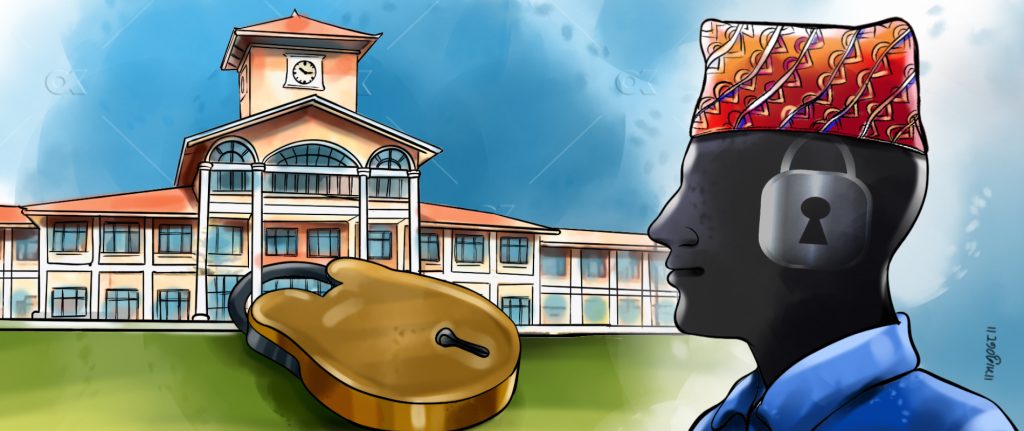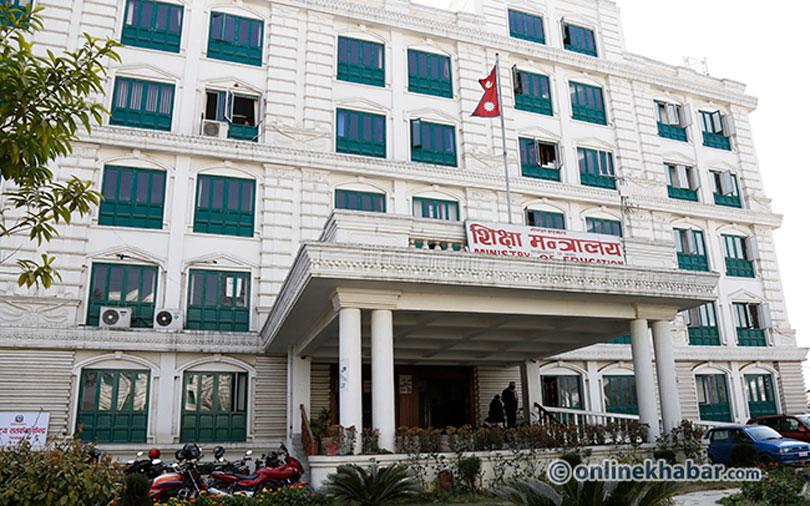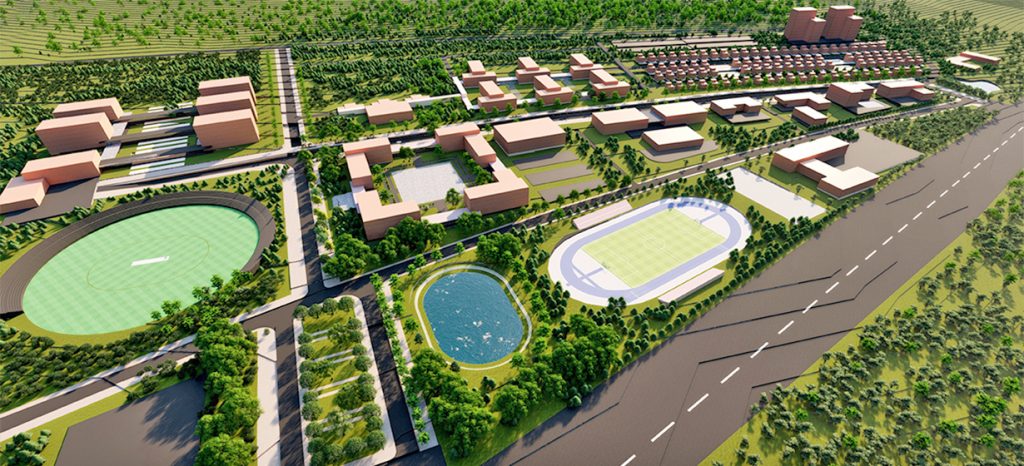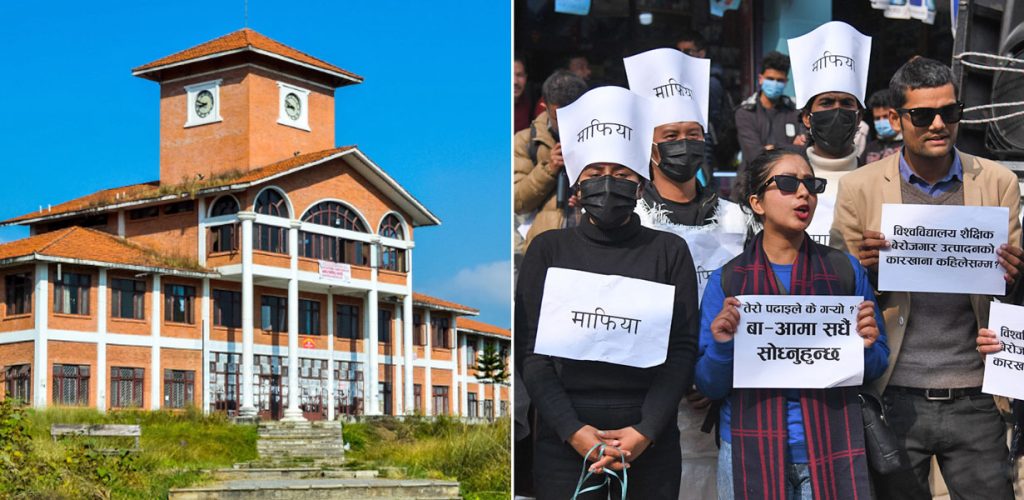In the fiscal year 2021/22, the government set a budget of Rs 18.18 billion for universities across the country. But, this amount was half of what the universities had asked for.
The University Grants Commission says that the amount the government invests in universities is woeful every time.
But, wait, the government is allowing the formation of more universities. Although the constitution has given all education-related rights only to the Education Ministry, ministries like health, defence, tourism and sports have started initiatives to establish their own new universities.
While experts say these new universities might produce the skilled human resources the country needs, a lack of research on how it will be managed badly worries them as the current condition of universities is in a dire state.
One ministry: one university

“Due to the incompetence of the political leadership and the weakness of the people they recruit, there is now a possibility of a university for each ministry,” says educationist Bidya Nath Koirala. “This shouldn’t be happening, but seems it will.”
A year ago, the Ministry of Culture, Tourism and Civil Aviation prepared a bill and sent it to the Council of Ministers to open a hotel management and tourism university called Dim University with the minister of tourism as its pro-chancellor. The bill states that the university can only run education programmes and not hand out affiliations. Despite the bill being sent to the cabinet, it did not move forward after then education minister Giriraj Mani Pokharel voiced his concerns. But, the bill is still with the Council of Ministers.
Similarly, there are also plans to set up National Defence University (NDU) under the watch of the Nepal Army and start its first session from 2023-24. The government has already given the green light and announced it had given a budget during the 2019-20 fiscal year. Nepal Army’s spokesperson Narayan Silwal says the university would teach subjects related to national security.
“We aim to teach Nepali Army and Armed Police Force subjects related to defence, home affairs and financial security,” he says.
Under the social studies and research academy of the university, work has been started so that the general public including the army can study. Professors and graduates of National Defence University, professors of colleges, experts of research centres, professors and those working in certain faculties will be its resource persons.
Similarly, the Ministry of Youth and Sports has also allocated funds for the establishment of a sports university and is conducting a feasibility study through Tribhuvan University. According to the ministry, the sports university will focus on various subjects surrounding sports. However, the ministry says everything will be clear only after the study report comes out.
The ministry’s spokesperson Bidur Prasad Khanal says that the ministry expected the feasibility study report in April but, it has not received it yet.
The dire condition of old universities

The country currently has 12 universities. And almost all of them are in a dire state. Tribhuvan University, the oldest university in the country, is miserable.
According to the University Grants Commission’s report published on November 23, 2021, there are less than 100 students in each of 510 education institutions under the university.
Similarly, according to the commission, there are 290 educational institutions with less than 100 pupils. But, without any prior planning, new universities are being founded. There are no established affiliation requirements or a proper roadmap for making suggestions for their establishment focusing on resource management for sustainability.
The report of the commission shows there is a shortage of students in the existing universities. The 12 universities in the country have a total of 466,828 students. Of them, 76.40 per cent or 356,654 students are studying at Tribhuvan University. The university has 1,437 colleges across the country.
Almost all existing universities are all multidisciplinary universities except the University of Agriculture and Forest Sciences, Nepal Sanskrit University and Lumbini Buddhist University. But, due to a lack of students, the Sanskrit and Lumbini Buddhist universities have also started teaching other subjects for sustainability.
If you look at the pass percentage, the situation is dire as only 29.3 per cent of students studying at TU pass their bachelor’s, master’s and PhD levels.
The necessity of systematic research
Many argue that the universities are performing badly due to political appointments. As the government changes, so do these officials, and that hampers the ongoing reforms in the universities if there are any. Then, every party’s student unions look for a cut and if their demands are not met, they raise an education issue and padlock offices.
The TU is a prime example of this. Sudan Poudel, the executive director of the Nepal Sanskrit University Research Centre, says the proposed new universities will not be any different from existing universities if the government does not do anything to change them.
“The university structure needs to be reformed. Until that happens, we can open as many universities as we want; nothing will change,” says Poudel.
No one knows how many universities are needed in Nepal because the government has not done any research on their actual requirement. Then, there is no systematic study on which university is capable of producing the required human resource and where the human resources produced by the universities are being consumed.
“The government has to do this basic research before allowing permission for new universities to establish. It’s useless to open any university without knowing the benefit it will give to the country,” says Tilak Ram Acharya, the registrar of the Lumbini Buddhist University.
Former Education Secretary Gopinath Mainali says there has been no study on the need for new universities in Nepal and how it is going to work for everyone’s benefit. “Research on the need for universities is the first thing that the government should do,” says Mainali.
According to Mainali, the need for new universities should be examined from several angles. To begin with, it should be examined from the perspective of the number of universities required in Nepal, as well as their contribution. Second, from the perspective of national human resource development or human resource development, and third, from the perspective of the global trend. Only after such research, he claims, will it be evident how many new universities the country requires.
Similar views were expressed by educationist Bidya Nath Koirala.
“We need to know which region’s universities will be run and by which government. We should also consider whether they will be private or operate on a private-public partnership basis,” Koirala says.
To open or not to open

Other education experts say there also needs to be a discussion on the curricula. The universities in the country have also been accused of producing students who are not capable of critical analysis.
A member of the development committee formed to prepare the infrastructures of Nepal University, Amina Singh, says, “We believe that a university should produce students with a critical mind. We think the curriculum and teaching style should be different for producing such students.”
Educationist Susan Acharya says new universities would not be facing a shortage in students if they opened after due research. She believes the country does not need new universities anymore.
“Based on Nepal’s population, we don’t need any more universities. If they open one, it’ll only be for political gain,” she says. After all, as mentioned, above even universities for specific subjects are bound to teach other subjects for sustainability.
“No one can guarantee that new universities will be any different than TU or any other university in Nepal,” says Acharya. “If we really want to create an environment, we should hire competent people. The posts should be filled based on competition. Even the vice-chancellor should be incorporated in this way. Political appointments should stop. If we can try that with the TU and implement it elsewhere, I’m sure things will change.”
Bidya Nath Koirala says that rather than establishing new universities, the government should instead decentralise the TU and have one campus in each province. This, he believes, will be beneficial for both the teachers and the students.
But, Ganesh Man Gurung, the chancellor of the Gandaki University, believes new universities should open according to the demand. He does, however, assert the new universities are identical to those already in operation. He claims that thorough research should be carried out prior to the opening of universities, but there is a need for more than that.
“There hasn’t been any research done on higher education in a long time. I believe we should start there and then figure out where we fall short and where we excel. Only then, we will be able to determine what students want to study and what colleges must provide for them,” says former TU VC Kedar Bhakta Mathema, who believes that this will aid in the establishment of new universities.
Even the chair of the University Grants Commission, Bhim Prasad Subedi, agrees that the country has not been able to do research on what new universities actually are needed. “We discuss that we need to do research, but nothing has been done so far,” says Subedi.
This story was translated from the original Nepali version and edited for clarity and length.

























